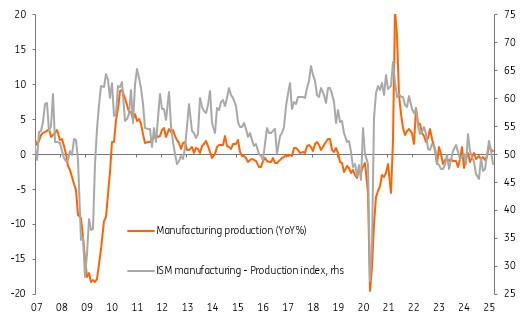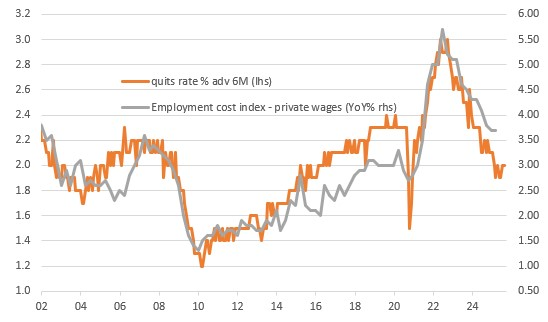Tariffs are meant to reinvigorate US manufacturing, but there is more concern about what they mean for supply chains and the prospect of foreign retaliation right now, amidst signs of a cooling domestic economy.
US Manufacturing Moves Back into Contraction Territory
Today’s US data are in general softer than hoped. The ISM manufacturing index for March dropped to 49.0 from 50.3, lower than the 49.5 consensus and back in contraction territory. This is broadly in line with regional manufacturing indicators released in recent days. The details show big drops in employment (44.7 from 47.6) and new orders (45.2 from 48.6) with production down at 48.3 versus 50.7. Remember 50 is the break-even level so anything above is expansion and the further below 50 the deeper the downturn.
This suggests that tariff fears (impact on supply chains and potential reciprocal action from foreign trading partners) are hurting the sector right now. Note too the big rise in prices paid to 69.4 from 62.4, which suggests pre-emptive moves ahead of the imposition of tariffs with the threat of higher prices for consumers looking very real. Below is a chart of manufacturing production growth (YoY%) versus the ISM production index. This underscores how the stagnation in the sector over recent years looks set to continue despite tariffs supposedly being a tool to reinvigorate manufacturing.
ISM Points to Falling Manufacturing Output

Source: Macrobond, ING
At the same time, the JOLTS data shows falling job openings (7568k versus 7762k in Jan and below the 7658k consensus) with the quits rate coming in at 2%. This in itself is at levels historically consistent with private sector wage growth slowing to 3% year-on-year. The chart shows the quits rate versus private wage growth. The story here is that the quits rate rises when there are lots of attractive, high paying jobs and falls when there are fewer jobs available or they are less attractive. When employers see the quits rate fall there is less incentive for businesses to offer their staff bumper pay awards as there is less concern about staff retention.
Quits Rate Points to Slowing Wage Growth

Source: Macrobond, ING
With tariffs set to drive inflation above 3% in the second half of 2025 this squeeze on consumer spending power is a key reason markets are worried about the US growth outlook. A soft jobs report on Friday would make matters even worse.
***
Disclaimer: This publication has been prepared by ING solely for information purposes irrespective of a particular user’s means, financial situation or investment objectives. The information does not constitute investment recommendation, and nor is it investment, legal or tax advice or an offer or solicitation to purchase or sell any financial instrument. Read more
